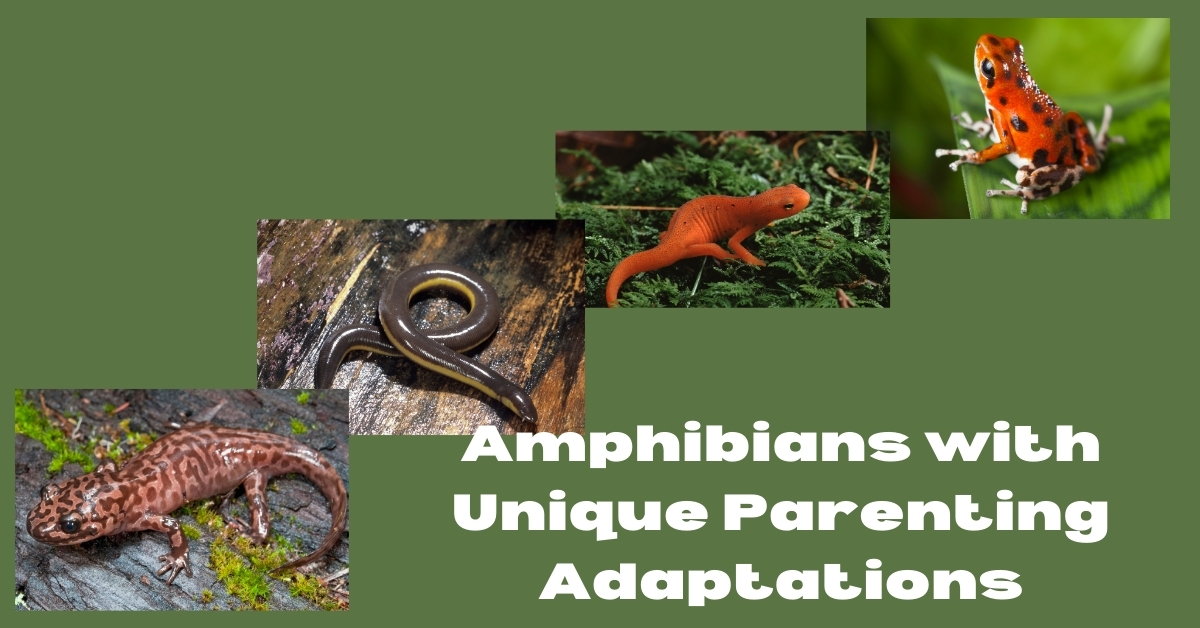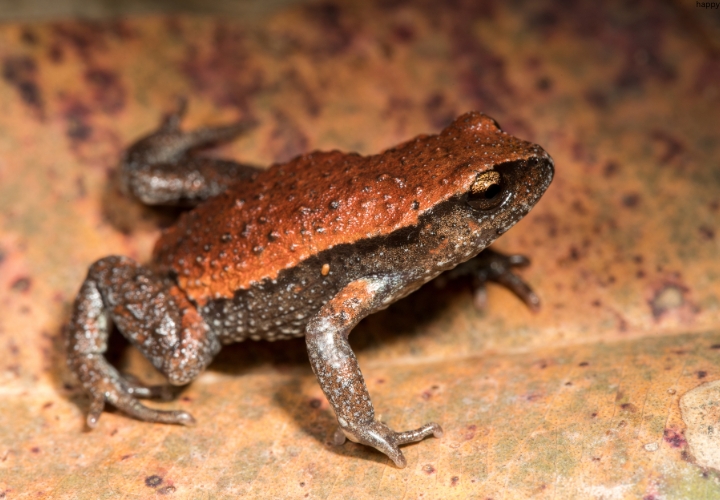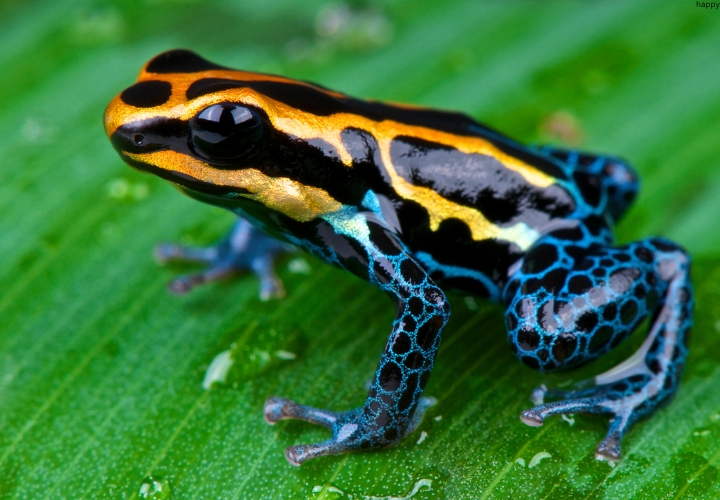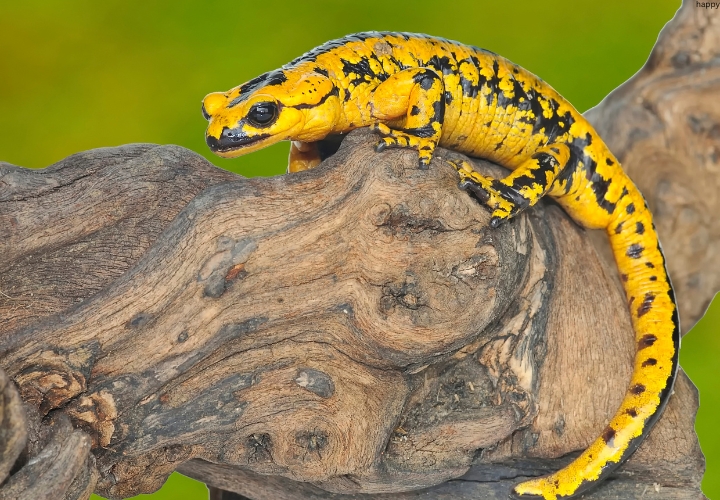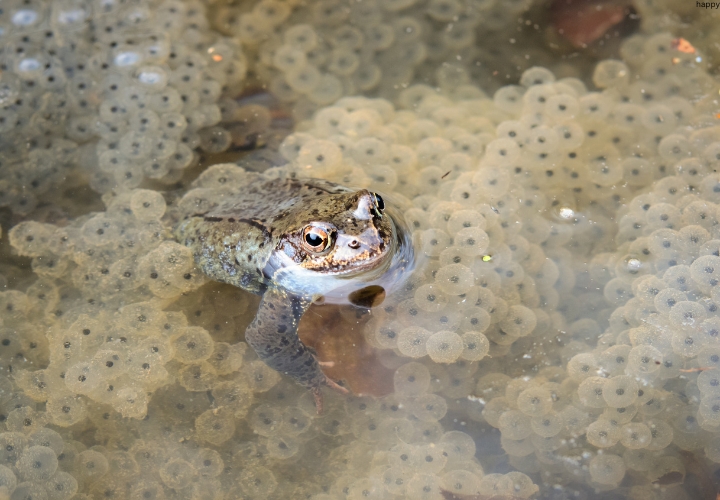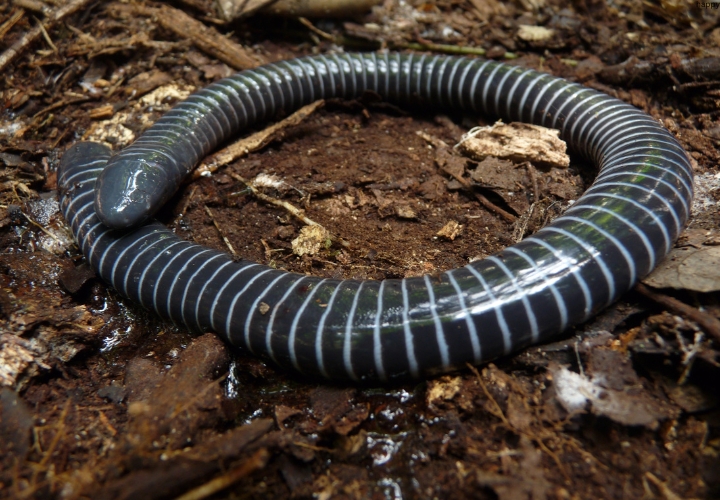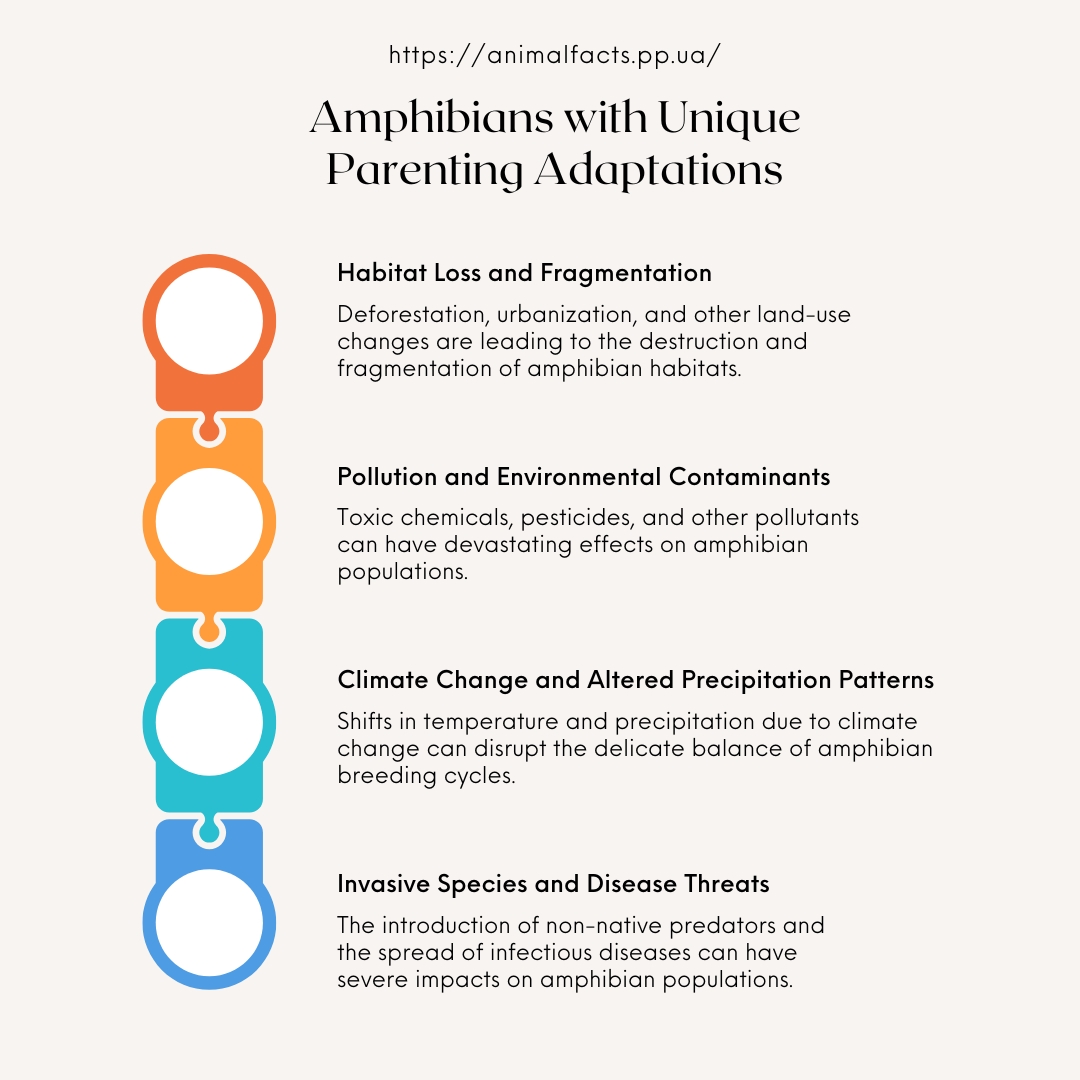Amphibians, the diverse group of animals that includes frogs, toads, salamanders, and caecilians, are known for their remarkable ability to adapt to a wide range of environments.
While their metamorphosis from aquatic larvae to terrestrial adults is one of their most well-known features, many amphibian species have also evolved unique parenting strategies to ensure the survival of their offspring.
In this blog post, we’ll explore 15 fascinating amphibians that have developed remarkable parenting adaptations, showcasing the incredible diversity and ingenuity of these incredible creatures.
Diversity and Adaptability of Amphibians
Amphibians, as a group, are known for their remarkable ability to adapt to a wide range of environments.
From the tropical rainforests of South America to the frozen tundras of the Arctic, these incredible creatures can be found in a variety of habitats, each with its own unique challenges.
1. Evolution and Adaptations
Over millions of years, amphibians have evolved a diverse array of physical and behavioral traits that allow them to thrive in their respective environments. From the development of specialized skin structures to the ability to undergo complete metamorphosis, amphibians have truly mastered the art of adaptation.
2. Importance in Ecosystems
Amphibians play a crucial role in the delicate balance of ecosystems around the world. As both predators and prey, they serve as important links in the food chain, helping to maintain the stability and biodiversity of the habitats they inhabit.
Remarkable Parenting Strategies
While the metamorphosis from aquatic larvae to terrestrial adults is one of the most well-known features of amphibians, many species have also evolved unique parenting strategies to ensure the survival of their offspring. These adaptations are a testament to the ingenuity and resilience of these incredible creatures.
1. Adaptations for Egg and Offspring Protection
Amphibians have developed a wide range of strategies to protect their eggs and developing young, from physical adaptations like egg-carrying and nest-building to behavioral traits like parental care and defense.
2. Specialized Reproductive Behaviors
In addition to their physical adaptations, many amphibian species have also evolved specialized reproductive behaviors that further enhance the chances of their offspring’s survival. These include tactics like foam nest-building, tadpole-feeding, and even live birth.
Amphibians and their characteristics
1. Gastric-brooding Frogs
The gastric-brooding frogs, a now-extinct group of Australian amphibians, were remarkable for their unique parenting strategy.
Females of these species would swallow their fertilized eggs, allowing the tadpoles to develop in the mother’s stomach. Once the tadpoles metamorphosed into froglets, the mother would “give birth” by regurgitating the young, effectively giving birth through her mouth.
This adaptation allowed the vulnerable tadpoles to develop in a safe, protected environment, increasing their chances of survival.
Characteristics and Habitat
- Gastric-brooding Frogs: A now-extinct group of Australian amphibians
- Unique Adaptation: Females would swallow their fertilized eggs, allowing the tadpoles to develop in the mother’s stomach
- Survival Benefit: The vulnerable tadpoles could develop in a safe, protected environment, increasing their chances of survival
2. Poison Dart Frogs
Poison dart frogs, found in the tropical rainforests of Central and South America, are known for their vibrant colors and potent toxins. However, these frogs also exhibit remarkable parenting behaviors.
After laying their eggs, the male frogs will guard and care for the clutch, keeping them moist and protected from predators.
Once the tadpoles hatch, the male will carry them on his back to a small pool of water, such as a bromeliad or tree hole, where they can complete their development.
Characteristics and Habitat
- Poison Dart Frogs: Found in the tropical rainforests of Central and South America
- Known For: Vibrant colors and potent toxins
- Parenting Adaptation: After laying their eggs, the male frogs will guard and care for the clutch, keeping them moist and protected from predators
- Tadpole Transport: Once the tadpoles hatch, the male will carry them on his back to a small pool of water, such as a bromeliad or tree hole, where they can complete their development
3. Marsupial Frogs
The marsupial frogs, found in South America, have a truly unique parenting adaptation. Females of these species have a pouch-like structure on their backs, where they carry their developing offspring.
After the eggs hatch, the tadpoles remain in the mother’s pouch, where they can complete their metamorphosis in a safe and protected environment.
Characteristics and Habitat
- Marsupial Frogs: Found in South America
- Unique Adaptation: Females have a pouch-like structure on their backs, where they carry their developing offspring
- Parenting Strategy: After the eggs hatch, the tadpoles remain in the mother’s pouch, where they can complete their metamorphosis in a safe and protected environment
4. Directional Parental Care in Newts
Newts, a type of salamander, exhibit a fascinating form of parental care known as directional parental care.
The female newt will deposit her eggs on aquatic plants, and then she will remain in the vicinity, guarding and defending the eggs from potential predators. If the eggs are threatened, the mother newt will reposition them to a safer location, demonstrating a remarkable level of parental instinct and care.
Characteristics and Habitat
- Newts: A type of salamander
- Parenting Adaptation: Directional parental care, where the female newt will deposit her eggs on aquatic plants and then remain in the vicinity, guarding and defending the eggs from potential predators
- Egg Repositioning: If the eggs are threatened, the mother newt will reposition them to a safer location, demonstrating a remarkable level of parental instinct and care
5. Egg-carrying Salamanders
Some species of salamanders, such as the Appalachian cloud salamander, have evolved the ability to carry their eggs with them.
After laying her eggs, the female salamander will wrap them around her body and carry them until they hatch, ensuring the survival of her offspring in the often-challenging environment of the forest floor.
Characteristics and Habitat
- Egg-carrying Salamanders: Such as the Appalachian cloud salamander
- Parenting Adaptation: Females can carry their eggs with them, wrapping them around their body until they hatch
- Survival Benefit: Ensures the survival of the offspring in the often-challenging environment of the forest floor
6. Tadpole-feeding Frogs
Certain frog species, like the glass frogs of Central and South America, exhibit a remarkable parenting adaptation where the mother will return to the nest and deposit unfertilized eggs for her tadpoles to feed on. This ensures a steady food source for the developing young, increasing their chances of survival.
Characteristics and Habitat
- Tadpole-feeding Frogs: Such as the glass frogs of Central and South America
- Parenting Adaptation: The mother will return to the nest and deposit unfertilized eggs for her tadpoles to feed on
- Survival Benefit: Ensures a steady food source for the developing young, increasing their chances of survival
7. Egg-feeding Caecilians
Caecilians, a group of legless amphibians, have an unusual parenting strategy. After laying her eggs, the female caecilian will remain with the clutch, coiling her body around them.
As the eggs hatch, the mother will provide her young with a nutritious, specialized “egg-feed” that helps them grow and develop.
Characteristics and Habitat
- Caecilians: A group of legless amphibians
- Parenting Adaptation: After laying her eggs, the female caecilian will remain with the clutch, coiling her body around them
- Egg-feeding: As the eggs hatch, the mother will provide her young with a nutritious, specialized “egg-feed” that helps them grow and develop
8. Egg-guarding Frogs
Many frog species, such as the common toad, exhibit parental care by guarding their egg clutches.
The male or female frog will remain with the eggs, keeping them moist and protecting them from predators and environmental stresses, until the tadpoles hatch and can fend for themselves.
Characteristics and Habitat
- Egg-guarding Frogs: Such as the common toad
- Parenting Adaptation: The male or female frog will remain with the eggs, keeping them moist and protecting them from predators and environmental stresses
- Survival Benefit: Ensures the tadpoles can hatch and fend for themselves
9. Foam Nest-building Frogs
Certain frog species, like the túngara frog of Central and South America, build elaborate foam nests to protect their eggs. The male frog will vigorously beat the water with his hind legs, creating a bubbly, frothy nest that keeps the eggs hydrated and safe from predators.
Characteristics and Habitat
- Foam Nest-building Frogs: Such as the túngara frog of Central and South America
- Parenting Adaptation: The male frog will create a bubbly, frothy nest to protect the eggs
- Survival Benefit: The foam nest keeps the eggs hydrated and safe from predators
10. Parental Egg Defense in Salamanders
Some salamander species, like the spotted salamander, demonstrate remarkable parental care by actively defending their egg clutches from predators. The female salamander will coil her body around the eggs, using her size and strength to fend off any threats to her offspring.
Characteristics and Habitat
- Parental Egg Defense Salamanders: Such as the spotted salamander
- Parenting Adaptation: The female salamander will coil her body around the eggs, using her size and strength to fend off any threats to her offspring
- Survival Benefit: Ensures the eggs are protected from predators
11. Nest-building Caecilians
Caecilians, the previously mentioned legless amphibians, have also evolved the ability to build nests for their young. Females will construct intricate underground burrows or chambers, lining them with leaves and other materials to create a safe and nurturing environment for their eggs and hatchlings.
Characteristics and Habitat
- Nest-building Caecilians: Legless amphibians
- Parenting Adaptation: Females will construct intricate underground burrows or chambers, lining them with leaves and other materials
- Survival Benefit: Creates a safe and nurturing environment for their eggs and hatchlings
12. Phytotelm-breeding Frogs
Phytotelm-breeding frogs, like the poison dart frogs, lay their eggs in small, naturally occurring water-filled cavities in plants, such as bromeliads or tree holes. The female frog then stays nearby, caring for the eggs and, in some species, even providing unfertilized eggs as a food source for the developing tadpoles.
Characteristics and Habitat
- Phytotelm-breeding Frogs: Such as the poison dart frogs
- Parenting Adaptation: Lay their eggs in small, naturally occurring water-filled cavities in plants, such as bromeliads or tree holes
- Parental Care: The female frog stays nearby, caring for the eggs and, in some species, even providing unfertilized eggs as a food source for the developing tadpoles
13. Egg-carrying Frogs
In a remarkable adaptation, certain frog species, like the Darwin’s frog, have evolved the ability to carry their eggs on their bodies. After laying the eggs, the male frog will pick them up and carry them, either in a specialized pouch or simply tucked under his skin, until they hatch.
Characteristics and Habitat
- Egg-carrying Frogs: Such as Darwin’s frog
- Parenting Adaptation: The male frog will pick up the eggs and carry them, either in a specialized pouch or tucked under his skin, until they hatch
- Survival Benefit: Ensures the eggs are protected and can complete their development
14. Parental Care in Newts
Newts, the previously mentioned salamanders, exhibit a range of parental care behaviors. In addition to the directional parental care mentioned earlier, some newt species will actively guard and defend their egg clutches, ensuring the survival of their offspring.
Characteristics and Habitat
- Parental Care in Newts: In addition to directional parental care, some newt species will actively guard and defend their egg clutches
- Survival Benefit: Ensures the survival of their offspring
15. Viviparity in Amphibians
While most amphibians lay eggs that hatch into tadpoles or larvae, a few species have evolved the ability to give birth to live young.
This adaptation, known as viviparity, is found in some caecilian and salamander species. In these cases, the offspring develop internally within the mother and are born as fully formed, miniature versions of the adults.
Characteristics and Habitat
- Viviparity in Amphibians: A few species have evolved the ability to give birth to live young
- Examples: Found in some caecilian and salamander species
- Adaptation: The offspring develop internally within the mother and are born as fully formed, miniature versions of the adults
- Survival Benefit: Eliminates the vulnerable egg and larval stages, increasing the chances of offspring survival
Conservation Efforts and Challenges
Despite their remarkable adaptations, many amphibian species are facing significant threats to their survival, such as habitat loss, pollution, and climate change. Conservation efforts are crucial in ensuring the continued existence of these incredible creatures and the delicate ecosystems they inhabit.
1. Threats to Amphibian Populations
Urbanization, deforestation, and the introduction of non-native species are just a few of the many threats that amphibian populations are facing around the world. Understanding these challenges is key to developing effective conservation strategies.
2. Importance of Amphibian Conservation
Protecting amphibians and their habitats is not only crucial for the survival of these incredible creatures, but also for the overall health and well-being of the planet. As sensitive indicators of environmental change, amphibians serve as important barometers of the health of our ecosystems.
Conclusion
The amphibian world is a true wonder, filled with a diverse array of species that have evolved remarkable parenting adaptations to ensure the survival of their young.
From the remarkable gastric-brooding frogs to the intricate nest-building behaviors of caecilians, these animals demonstrate the incredible ingenuity and resilience of life.
By understanding and appreciating the unique parenting strategies of amphibians, we can gain a deeper appreciation for the natural world and the amazing diversity of life on our planet.

